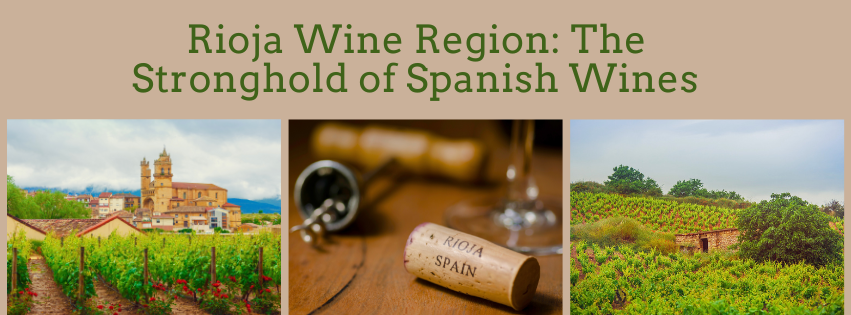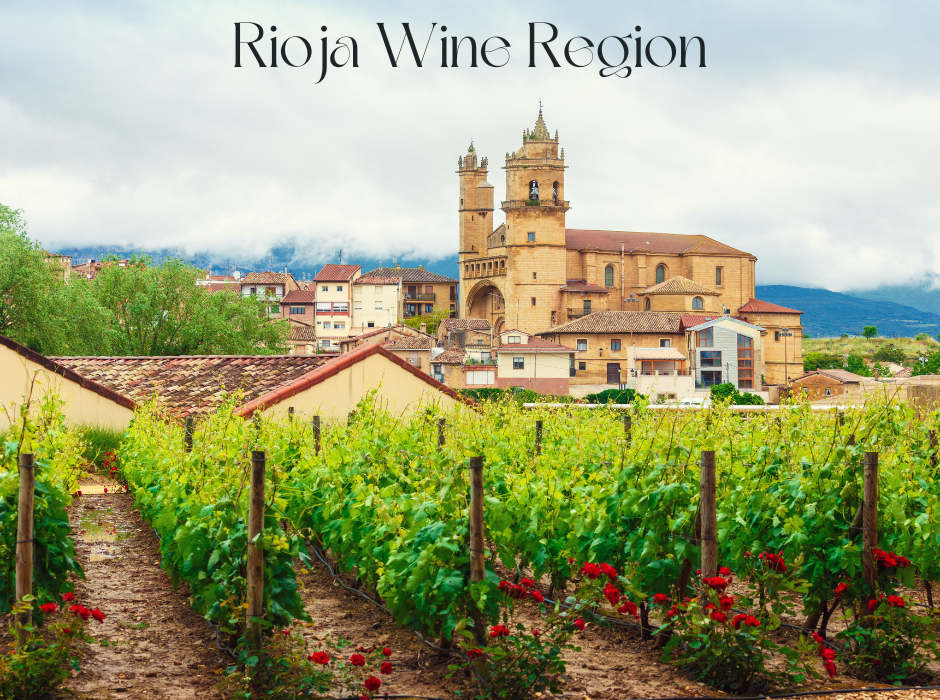Rioja has long been a pioneer in Spain. The region was the first to adopt modern winemaking techniques, and it was also the first Spanish wine region to receive Denominación de Origen (DO) protection. Rioja is one of Spain’s most famous and respected wine regions, renowned worldwide for its high-quality red wines. Located in northern Spain, this region has a rich winemaking history that spans centuries, and its diverse soils, along with traditional winemaking practices, contribute to Rioja wines being counted among the best in Europe. In this blog, we’ll explore Rioja’s history, characteristics, and some fascinating insights into the world of wine.

History of Rioja: Tradition and Modernization
The winemaking history of the Rioja region stretches back over two thousand years, with the Romans being the first to cultivate vines in this area. The name Rioja comes from the “Rio Oja” river, which flows through the region. In the Middle Ages, monks played a crucial role in improving winemaking techniques, which continued to evolve until Rioja became a world-class wine region in the 19th century.
The French influence on Rioja was significant, especially after the phylloxera plague destroyed much of France’s vineyards, prompting many French winemakers to collaborate with Spanish counterparts and introduce new techniques. To further protect the quality and reputation of Rioja wines, Spain established its first Denominación de Origen (DO) system in 1925, guaranteeing the origin and quality of wines produced here.
With 63,500 hectares of vineyards, 18,000 growers, and almost 600 wineries, Rioja is now one of the world’s most significant wine regions. The annual wine production is approximately 2.75 million hectoliters. The region produces red, white, and rosé wines, with red being the dominant style.
Distinct Features of the Rioja Wine Region
Rioja is divided into three subregions: Rioja Alta, Rioja Alavesa, and Rioja Baja (now called Rioja Oriental). Each of these areas has its own unique climate and soil, which contribute to the distinctiveness of the wines produced there. The Tempranillo grape is the backbone of Rioja’s red wines, but other varieties such as Garnacha, Graciano, and Mazuelo are also cultivated in the region.

Rioja wines are classified into four categories, depending on the length of their aging process:
- Joven – Young and fresh wines, with little to no oak aging.
- Crianza – Aged for at least one year in oak barrels, followed by one year in the bottle.
- Reserva – Aged for three years, including at least one year in oak barrels.
- Gran Reserva – Aged for at least five years, with two years in oak and three years in the bottle.
Interesting Facts About Rioja
- The Harvest Tradition
In Rioja, the grape harvest is an important and festive occasion. Every June in the town of Haro, the famous “Batalla del Vino” (Wine Battle) takes place, where participants throw liters of wine at each other in a lively celebration. This unique event is a fun mix of reverence for wine and pure entertainment.
- Underground Bodegas
The region is full of impressive wineries, known locally as “bodegas.” Some traditional wineries are located underground to provide a natural environment for aging wine. The town of Laguardia is famous for these centuries-old cellars, carved into limestone hundreds of years ago.
- Innovative Architecture and Wineries
While tradition is key, Rioja has also embraced modernity. Several wineries stand out for their futuristic architecture. The famous Marqués de Riscal winery, designed by Frank Gehry, who also created the Guggenheim Museum, is a prime example, blending a state-of-the-art winery with a luxury hotel.

Conclusion
The Rioja wine region is a unique blend of traditional winemaking techniques and modern innovation. The wines produced here are exceptional, full of character and rich flavors that wine lovers from around the world greatly appreciate. Whether you’re interested in history, culture, or simply great wine, exploring Rioja is sure to be a memorable experience.
TIP:


